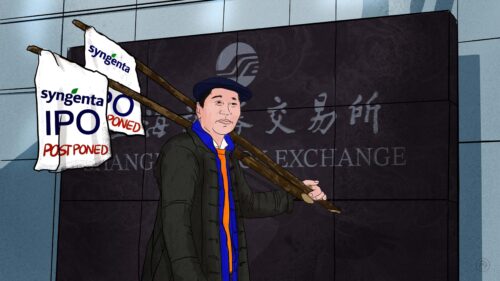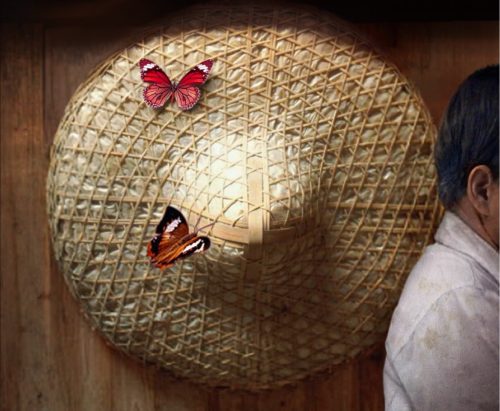What do new rural land rights mean for Chinese farms?
Farmers can’t sell or easily transfer usage rights to their land, so they are stuck in the countryside, while large farming concerns — private or state-owned — struggle to amass enough land to enjoy efficiencies of scale. Is this about to change?

Collective land ownership — as opposed to privately owned land — is among the last vestiges of socialism in modern China. It’s also become a headache for Chinese Party officials, a drag on economic growth, and a core issue behind soil pollution.
On November 3, China unveiled new rural land right rules allowing the Party to maintain the collective land ownership system while transitioning to modern industrial farming. I sat down with Fred Gale, senior economist at the United States Department of Agriculture (USDA), to unpack what the new rules mean for China.
“It’s very complicated, adventurous and experimental,” says Gale, who’s spent the past 15 years studying agriculture in China. In contrast to the U.S., where ownership of farmland and the right to use it are normally combined, in China, land is technically owned by all members of the community. From the 1950s until the 1970s, land was collectively farmed according to the Soviet model, but a key aspect of the reform and opening up was the household responsibility system, whereby village collectives divided into small plots that were contracted out to farmers for their own individual use. These slivers of farmland have made it hard for Chinese farmers to achieve efficiencies from scale and compete internationally. “One of the problems that China faces is a very fragmented land base,” says Gale. “The size of a Chinese farm may be what we consider a garden.”
But China has been playing with that model, and Gale comments that land transfers have actually been going on for some time before agriculture minister Han Changbin’s formal endorsement. Since 2008, when a decision on rural reform and development was approved during a meeting of China’s top leaders at the Third Plenum of the 17th Central Committee, officials have been experimenting with the subcontracting out of rural land rights by the farmers themselves rather than relying on the village collective (see the World Bank website). In 2008, a survey by the Ministry of Agriculture showed that 7 percent of agricultural land had been transferred in some form; now, the Ministry of Agriculture reports that over 30 percent of rural land has been leased for others to operate. The rural land right reforms pave the way for President Xi Jinping’s larger goal of farm consolidation and agricultural modernization. Under the reforms, Chinese farmers would not have the right to sell the land outright, but they would have the right to transfer over their plot of rural land to another farmer or company, gaining income from the land while not having to actually farm it themselves.
Models for agricultural modernization
Land transfers have taken several different forms. Under one “stock-holding model,” a village collective organization leases the land out to a company or local farmer looking for a larger plot. Village members get land “shares” and a dividend-like cash payout while not actually having to farm or physically remain in the village.
Under a cooperative model, run either by a lead farmer, the village collective or a company, the village jointly buys inputs or sells products to an intermediary. A few hundred members at most, China’s cooperatives are much smaller than cooperatives in the U.S., according to Gale. “In China, cooperatives have been relatively small, and that’s intentional to prevent them from becoming a political force like in Japan or Taiwan, where farm associations have power.”
Experiments with different rural land rights models have spread around the country while being a source of controversy and concern within the Communist Party. “There’s a lot of concern not only on theoretical grounds over whether this is still socialism or not, but also on whether farmers will get cheated and get their land taken away from them,” says Gale. Chinese real estate companies are suspected of ripping off farmers, stepping in to obtain cheap rural land and then flipping it for more profitable commercial use.
In addition, while granting rural farmers land rights to trade for life in the city is in line with President Xi’s 2020 urbanization target, officials worry about an influx of rural and uneducated poor that could create city slums. Meanwhile, China must also navigate who its next generation of farmer will be. “They know they need to make this transition and they need to make it in a way that keeps this transition in control,” says Gale.
China’s new farmer
China began supporting agribusiness and agricultural industrialization in the 1990s, encouraging large companies to bring in capital, technical advice, seeds and other inputs like fertilizers and pesticides. Now China is turning to companies to do the farming as well.
“We’re at a point where small farmers are not so interested. You can make more money driving a taxicab,” says Gale, noting that strong Chinese agricultural companies didn’t emerge until around 2008. Now meat-processing company WH Group, the world’s largest pork producer, as well as agribusiness groups like New Hope and the livestock-focused Wens Foodstuffs Group have stepped in to fill the void left by the decline of traditional farming.
Gale sees China’s large agricultural companies as playing a functional role in food safety and management as well. For example, in 2011, a subsidiary of WH Group, formerly known as Shuanghui, was caught raising pigs with illegal food additives. WH Group then looked to expand from meat processing into raising pigs — a strong motivation behind the purchase of the U.S. pork company Smithfield. “There’s been a lot of pressure for the big companies to integrate the whole process. They may even own the restaurant.”
Though large-scale farming is not necessarily the ideal, Gale emphasizes the need for improved management. “The model of backyard production has been disappearing very fast, and it’s been moving toward more commercial models that have all the bad things of industrial farming without the good management,” he says. “One of the criticisms of Chinese pig farms is that they crowd their pigs and don’t give them enough sunlight. U.S. farms do pay attention to the welfare of the animals, otherwise, it will end up costing the farmer.”
Privatization vs. pollution and China’s agricultural gamble
Though the land right rules may have made it easier for land consolidation and agricultural commercialization, they fall far from outright privatization and direct ownership. “If you don’t own the land, your incentive is to get as much out of the land [as possible],” says Gale, who comments that the lack of individual ownership decreased incentives to maintain soil fertility over the long term. Gale likens land ownership in China to renting vs. buying a home. “Now that I own a house, if something is leaking, I will fix it. I’ll spend extra time on improvements like yard work so that I can sell it for higher value.”
As long as land ownership and use rights remain separate, it’s unclear whether the issue of China’s soil pollution will be addressed. Meanwhile, excessive chemical fertilizer and pesticide use is a significant problem in rural China. This April, nearly 500 students at the Changzhou Foreign Languages School suffered symptoms such as skin rash and bronchitis due to pollution from a former nearby fertilizer factory.
Finally, Gale notes that the new rules may not have the intended effect of boosting agricultural production. “Consolidation is also a big gamble,” he says. “There’s no guarantee that people who come into farming know what they’re doing.” Gale cites examples of real estate tycoons who purchase the land rights but then rely on hired farm managers for expertise. “It’s very uncertain if these new farms will actually be more productive, and it will take some time before this new generation of farmers can learn how to do a good job at farming. That’s something that nobody knows how it will play out.”





